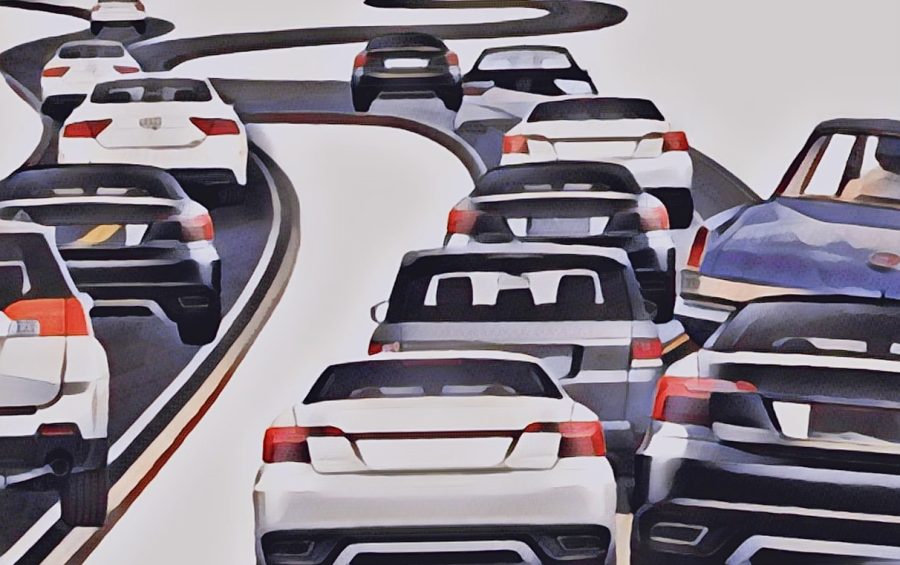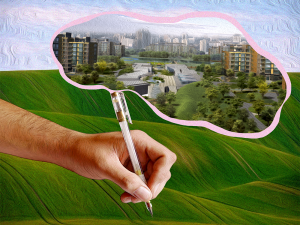Urge Project Connect to avoid West Campus traffic
April 13, 2023
Austin approved the $5 billion budget for the Project Connect Light Rail in 2020. Earlier this year, the Austin Transit Partnership created a light rail virtual open house to display the possible plans for the next stage of sustainable transportation near UT. Strikingly, the plans mostly involve street-level implementation.
Without fail, all versions of the plan pass by the UT’s Campus, taking up extra space on main streets that already deal with large amounts of traffic. The light rail proposals should choose to limit excess congestion by rerouting traffic. Students must advocate for their commute to school so it is not hindered by this new form of transport.
Through the light rail, ATP aims to “sustainably support Austin’s population and economic growth and increase transportation network capacity to meet increasing demand.”
The five proposed plans have variations of light rail formats. While they cover a relatively small area, most are from around or near UT to downtown. With their on-street design, the light rail will interact with drivers, bicyclists and pedestrians. The issue is that in areas where right-of-way is already limited, like on Guadalupe, traffic lanes may be further reduced to accommodate the light rail.
“On Guadalupe, there are some areas that we may be going down from four lanes to two lanes in some instances,” said Lindsay Wood, executive vice president of engineering and construction at ATP. “And I think there’s one segment that could be going down from six lanes to four lanes for one portion and then through the drag itself.”
Reducing the amount of open lanes while adding another form of transportation on the road will likely create additional traffic for students and staff at UT to navigate around.
“I think the three main roads that come to mind in connection to UT are Dean Keeton, (Guadalupe) and MLK,” Race, indigeneity and migration and sociology sophomore Leo Garcia said. “All those roads are packed with cars at any given moment when students are normally on campus.”
Regardless of which proposal Project Connect chooses, regular UT congestion will increase, especially during rush hours, on streets like Guadalupe that are already affected by campus traffic.
“Having trains in the mix is kind of a slow long vehicle, and so any time you have trains mixing with traffic, there’s intersection issues,” said Kara Kockelman, a professor of transportation engineering in the Department of Civil Architecture and Environmental Engineering. “And if they’re in the same right of way … they absolutely will reduce the throughput for cars and maybe bicycles and pedestrians, depending on the other two modes, certainly for cars.”
Having many options for transportation is important for the UT community, so it is vital that Project Connect takes action to make sure that their plans do not negatively affect student or staff commuters.
“Texas is notorious for having highways that run for miles and miles or (are) 28 lanes wide … and oftentimes growing up, my mom would say, ‘I’m gonna get your car as soon as I can because without a car, you cannot move here as easily as you could with one,” Garcia said.
While there are many options that the Project Connect team is examining to mitigate traffic, rerouting congestion is the most cost-effective and feasible solution to these issues. The solution would involve reworking the congestion to parts of the traffic network that can withstand the extra pressure of more bodies, cars and other modes of transport.
“The most important part of this project is that we’re really meeting our community’s value for light rail, of helping people improve options for mobility and affordability and access to opportunities and sustainability, while making sure that we define the project in a way that makes it investable by our federal funding partners that help us leverage every dollar we have to build the most that we can.” said Wood. “So meeting both our community values but also requirements for federal funding.”
Students and staff at UT have the ability to advocate for the community until May 2 by submitting comments on the ATP open house website. We deserve the option to get to our campus in the way that is most convenient, efficient and cost effective for us.
Muthukrishnan is a government and race, indigeneity and migration freshman from Los Gatos, California.















